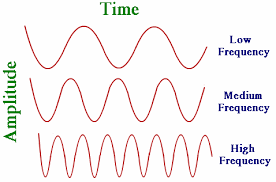
Frequency Physics.
Not all frequencies are the same value.
 image ©recordingstudiorockstars.com
image ©recordingstudiorockstars.com
Frequencies used for mobile phone technology range from 800MHz to 3.8GHz; with 26GHz and 40GHz coming on stream. These frequencies have different characteristics and as such have different uses in data transmission. In fact 4G & 5G uses the extreme frequencies, one low and one high to be able to match the requirements of the network and the characteristics of the signals.
- Given a similar input, and a fair environment to transmit, a signal will deteriorate depending on the number of oscillations, waves. So as a rough estimate a 800MHx signal will travel over 3 times the distance of a 2.6GHz signal. [A gross generalisation but OK]. Hence Higher frequencies are more suitable for city use and lower frequency for more rural environments.
- The amount of data sent, with the same coding scheme, is dependent on the number of waves per second. So the higher frequency (2.6GHz) will be over 3 times faster than the lower (800MHz) wavelength.
- Longer wavelengths (lower frequencies - 800MHz) can go through walls better than shorter wavelengths (higher frequencies 2.6MHz) so indoor use is affected if the longer wavelength is used.
© mobilephonetechnology.co.uk all rights reserved 2017-2025
